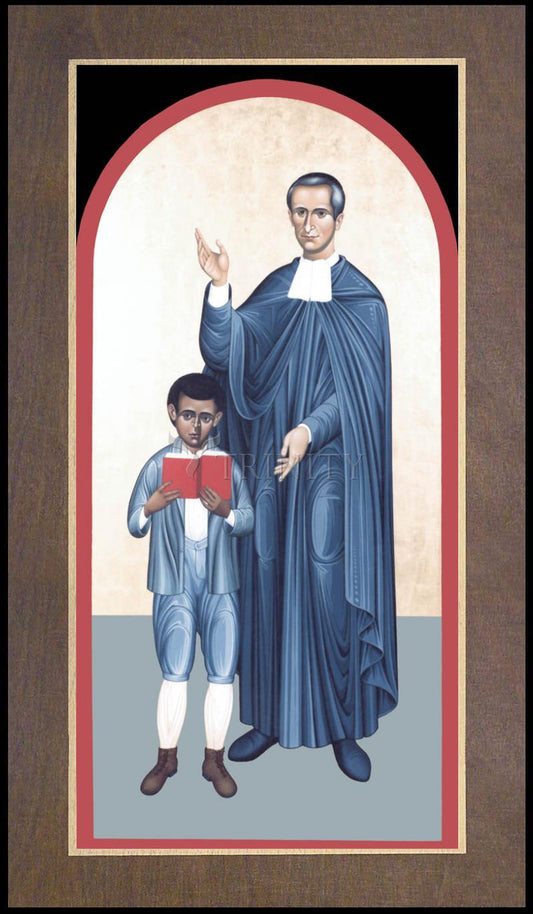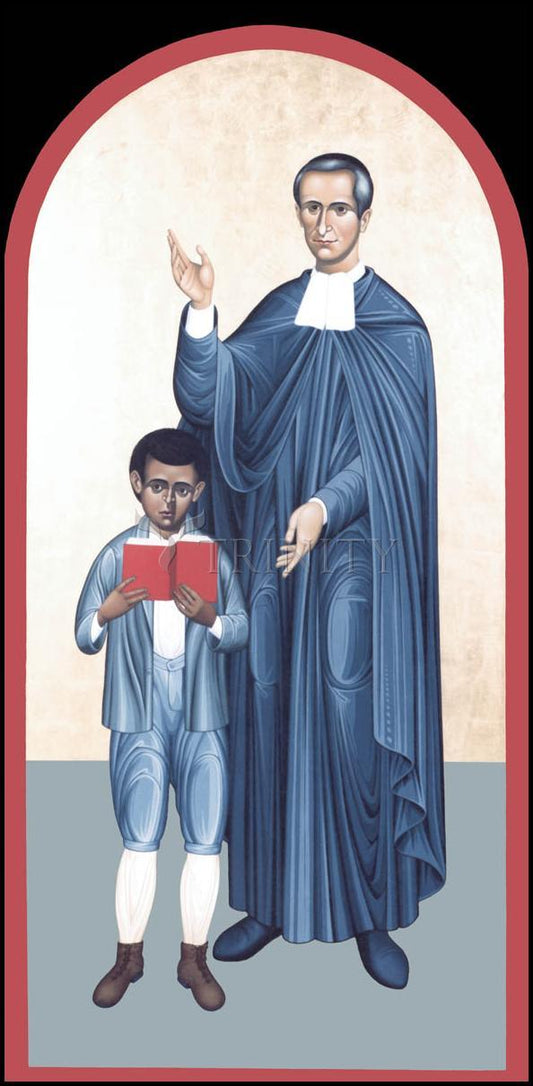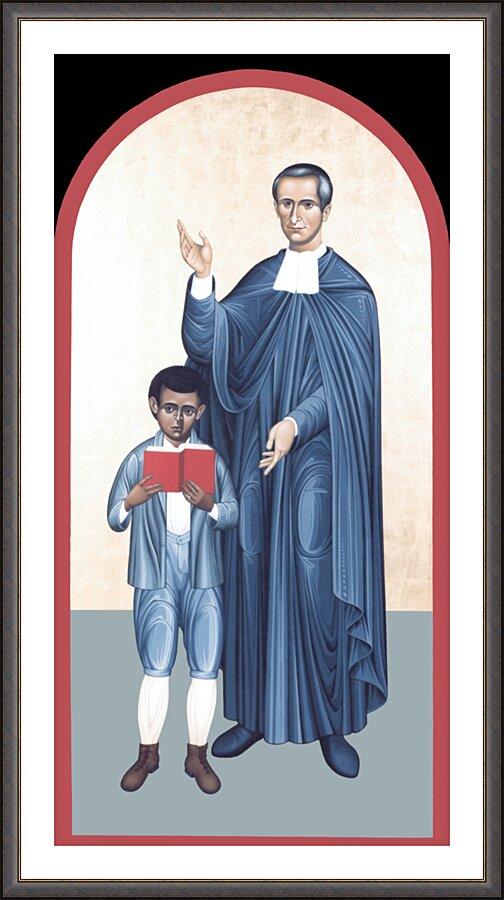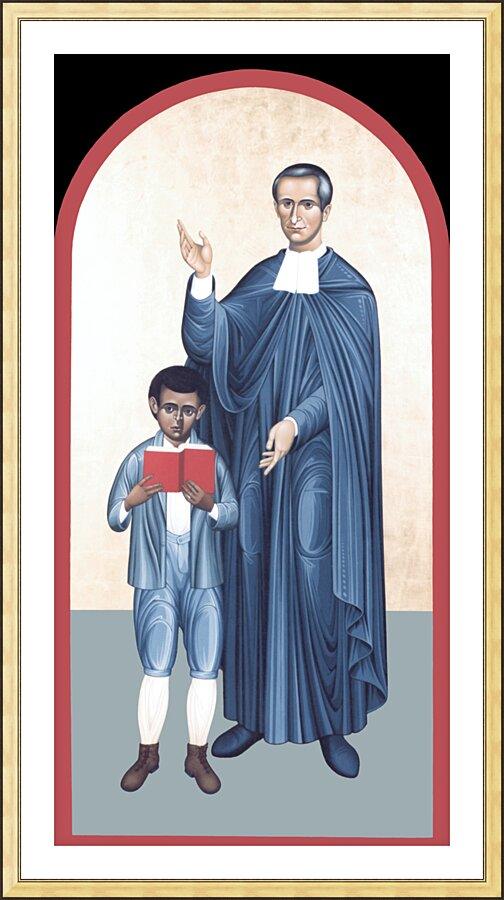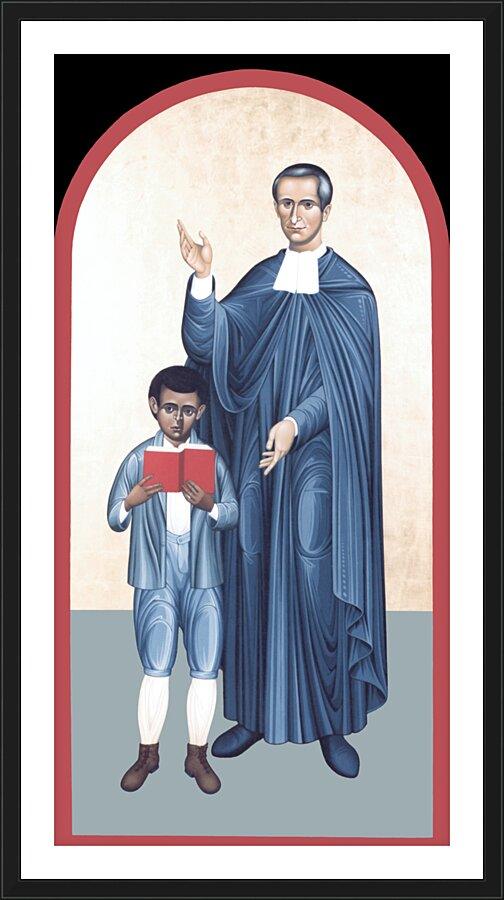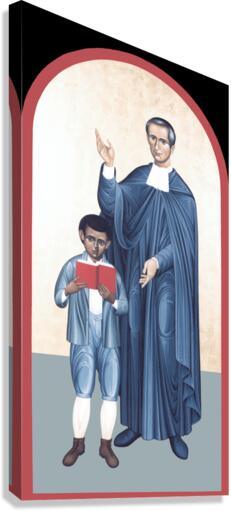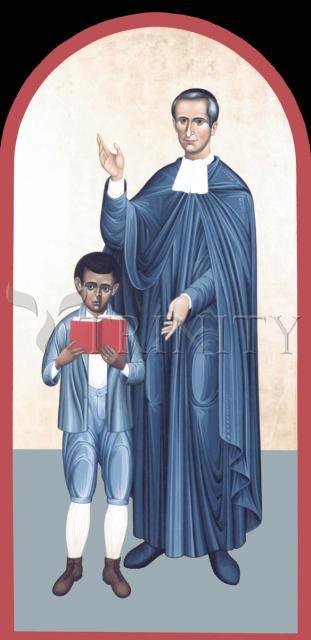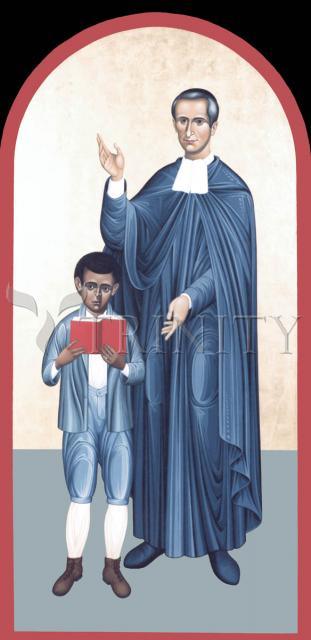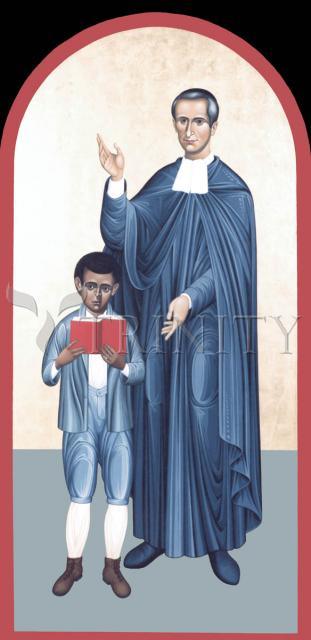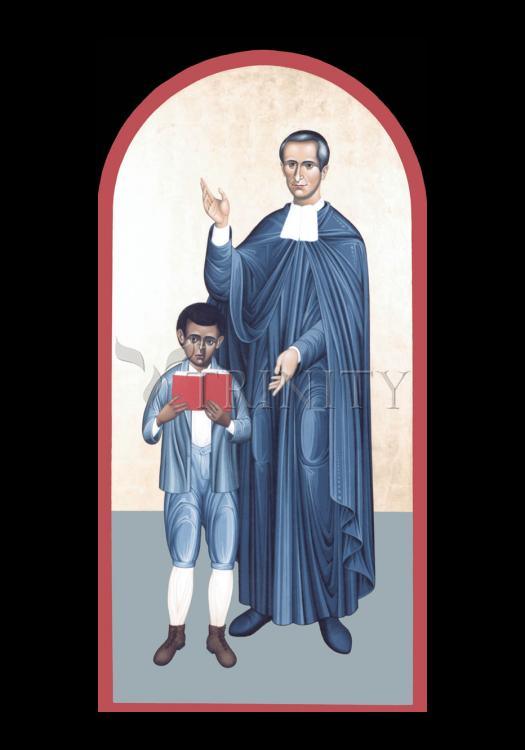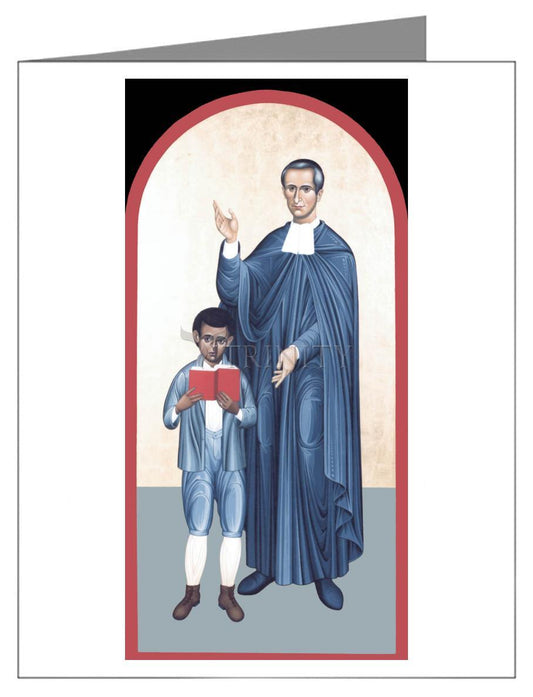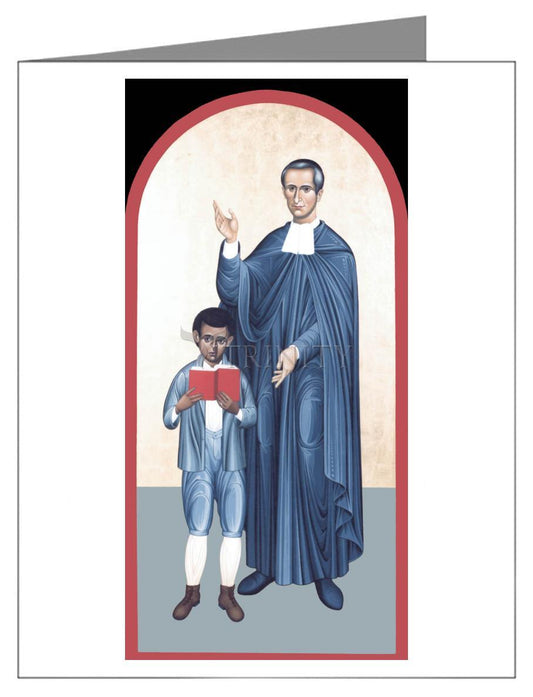Miguel was born of a prominent family. He was also born with an unknown disability and he was unable to stand until age five when he received a vision of Our Lady. At age eight he was miraculously protected from being mauled by a wild bull. In 1863, at age nine, he enrolled in a school run by the Christian Brothers, which Order had only recently come to Ecuador. He joined the Brothers on 24 March 1868 at age 13.
Miguel was a school teacher at El Cebollar School, Quito, a position he held for 32 years. He was a gentle, dedicated, and enthusiastic teacher. He wrote his own textbooks, the first at age 17; some were adopted by the government, and used throughout the country. He wrote odes, hymns, discourses on teaching methods, plays, inspirational works, and retreat manuals. Miguel was elected to the Ecuadoran Academy of Letters in 1892, followed soon after by the Academies of Spain, France, and Venezuela. He conducted religious retreats, and prepared children for their First Communion. He was a novice director for his house from 1901 to 1904.
Miguel was sent to Europe in 1905 to translate texts from French to Spanish for use by the Order; working primarily in Belgium. His health began to fail in 1908, and he was transferred to the school near Barcelona, Spain. He continued to work, but slowly, his health continued to fail, and he died there in 1910. In addition to being a religious role model, Miguel is considered a national hero in Ecuador for his success in so many worthwhile areas.
Born: November 7, 1854 at Cuenca, Ecuador
Died: February 9, 1910 of pneumonina at Premia del Mar, Spain, and buried there; grave disturbed during the Spanish Civil War, and his body found incorrupt; re-buried in Quito, Ecuador, his tomb has become a pilgrimage site
Beatified: October 30, 1977 by Pope Paul VI
Canonized: October 21, 1984 by Pope John Paul II
Readings:
The heart is rich when it is content, and it is always content when its desires are fixed on God.
"Saint Miguel



